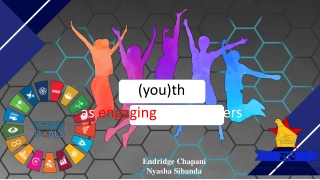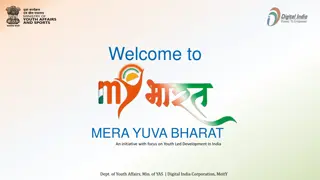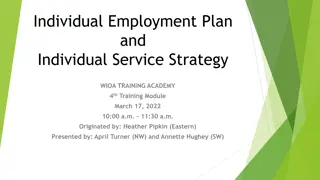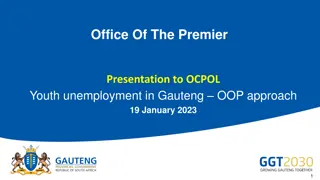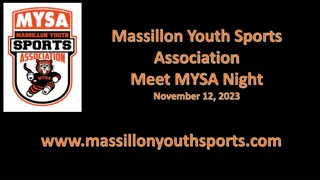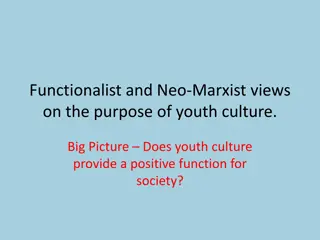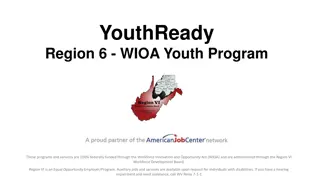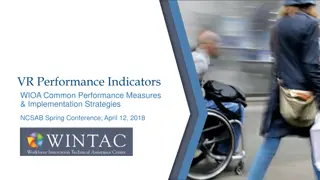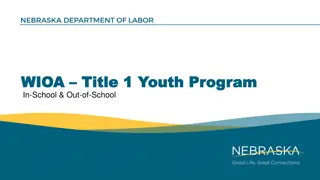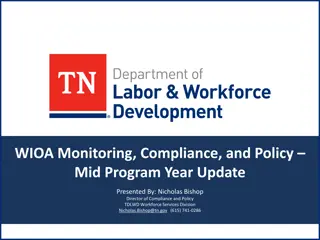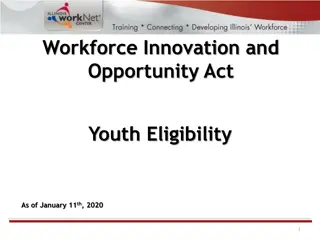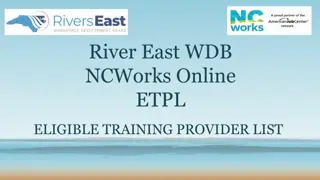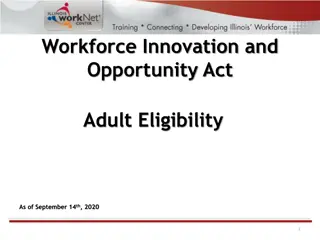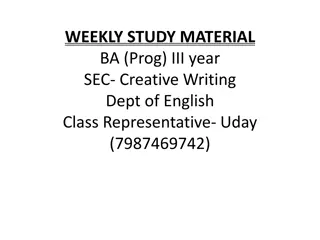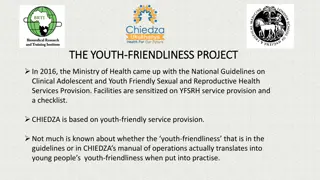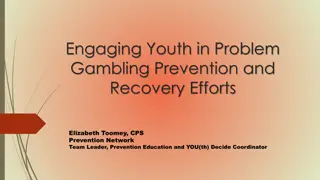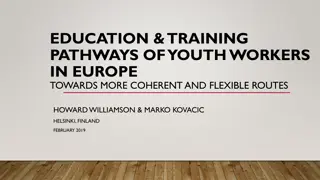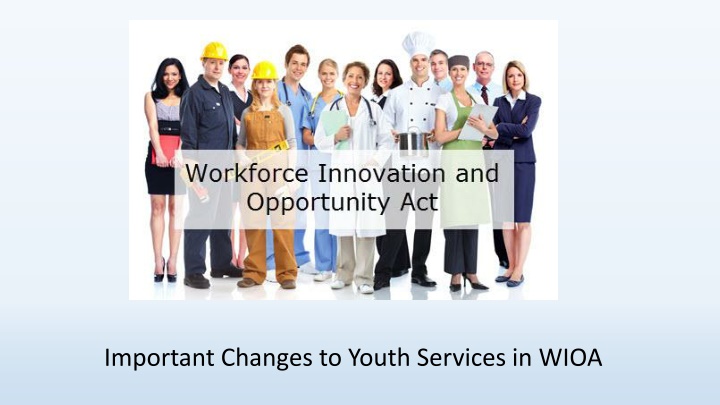
Youth Services Changes in WIOA: Impact on Out-of-School Youth (OSY)
Explore the important changes in youth services under WIOA, focusing on the increased funding for out-of-school youth (OSY) and the specific criteria defining OSY and in-school youth. Discover why there is a heightened emphasis on OSY, the challenges they face, and the implications for VR programs. Delve into the significance of shifting resources towards supporting vulnerable youth populations and addressing their unique needs.
Download Presentation

Please find below an Image/Link to download the presentation.
The content on the website is provided AS IS for your information and personal use only. It may not be sold, licensed, or shared on other websites without obtaining consent from the author. If you encounter any issues during the download, it is possible that the publisher has removed the file from their server.
You are allowed to download the files provided on this website for personal or commercial use, subject to the condition that they are used lawfully. All files are the property of their respective owners.
The content on the website is provided AS IS for your information and personal use only. It may not be sold, licensed, or shared on other websites without obtaining consent from the author.
E N D
Presentation Transcript
Youth Services in WIOA Some of the most significant changes from WIA to WIOA are related to youth services. Why do you suppose this is? VR is especially affected by the focus on transition and youth How do you feel about the focus on youth?
Youth Funding in WIOA Youth Funding in WIOA At least 75% of youth formula funds must be spent on out-of- school youth (OSY) an increase from 30% in WIA A maximum of 25% of funds may be used for in-school youth
Out of School Youth Out of School Youth Subject to the juvenile or adult justice system Homeless Runaway In foster care or aged-out of the foster care system TANF SSA Pregnant or parenting Low income that requires additional assistance to enter or complete an educational program or secure or hold employment Aged 16-24 and not attending school Falls within one or more of the following: Individual with a disability School dropout Did not attend school for at least the most recent school year calendar quarter Has a diploma or recognized equivalent and is low-income and basic skills deficient or an English language learner
Why so much on Why so much on OSY OSY? ? Arrest rates are high Between 28% and 43% have a disability In the child welfare system: 90% have some kind of health problem 55% have two or more chronic health conditions 25% have three or more chronic health conditions 30%-60% have developmental delays 50-80% have mental and behavioral health issues
In In- -School Youth School Youth Aged 14-21 Attending school Low income and meet one or more of the following conditions: Basic skills deficient English language learner Subject to the juvenile or adult justice system Homeless Runaway In foster care or aged-out of the foster care system Pregnant or parenting Has a disability Low income that requires additional assistance to enter or complete an educational program or secure or hold employment
WIOA Youth Services Include WIOA Youth Services Include: Tutoring and skills training Alternative secondary school offerings Paid and unpaid work experience Occupational skills training Leadership development activities Supportive services Adult mentoring Follow-up services Counseling Education and training for specific occupations Financial literacy Entrepreneurial skills training Labor market information Post-secondary preparation and transition activities
Work Experience Work Experience 20% of Youth formula funds must be spent on work experience which includes: Summer and year-round employment opportunities Pre-apprenticeship Internships and job shadowing On-the-job training
Pre Pre- -Employment Transition Services (PETS) Employment Transition Services (PETS) The VR program in collaboration with the LEAs Provide, or arrange for the provision of, PETS for ALL students with disabilities in need of such services 15% of VR s Federal funds must be used for PETS Student with a disability is defined as: 16-21 or 22 (depending on the state); Eligible for and receiving Special Ed services; or Is a student who is an individual with a disability for purposes of 504
PETS 5 Required Services PETS 5 Required Services Job exploration counseling; Work-based learning experiences, which may include in-school or after school opportunities, or experience outside the traditional school setting (including internships), that is provided in an integrated environment to the maximum extent possible; Counseling on opportunities for enrollment in comprehensive transition or postsecondary educational programs at institutions of higher education; Workplace readiness training to develop social skills and independent living; and Instruction in self-advocacy, which may include peer mentoring.
More on PETS Does not replace the school s responsibility under IDEA Can be provided to non-applicants this is a significant change from the past Includes a range of services from the most basic to intense The law requires coordination between VR and educational agencies on the provision of PETS The 15% reserve for PETS does not include administrative costs You can count direct counselor time providing the service
Groups Job exploration counseling; Work-based learning experiences, which may include in-school or after school opportunities, or experience outside the traditional school setting (including internships), that is provided in an integrated environment to the maximum extent possible; Counseling on opportunities for enrollment in comprehensive transition or postsecondary educational programs at institutions of higher education; Workplace readiness training to develop social skills and independent living; and Instruction in self-advocacy, which may include peer mentoring. Each group has to develop a plan to provide their required service as inexpensively as possible. Your plan must ensure that EVERY student with a disability in CNMI gets the service Who will provide the service? How will it be provided? When will it be provided? Where will it be provided? What capacity has to be built for your plan to work? What partnership(s) is/are crucial to your plan? What has to happen for your plan to begin? When can it start?
9 Authorized Activities 9 Authorized Activities Implementing effective strategies to increase the likelihood of independent living and inclusion in communities and competitive integrated workplaces; Developing and improving strategies for individuals with intellectual disabilities and individuals with significant disabilities to live independently, participate in postsecondary education experiences, and obtain and retain competitive integrated employment; Providing instruction to vocational rehabilitation counselors, school transition personnel, and other persons supporting students with disabilities; Disseminating information about innovative, effective, and efficient approaches to achieve the goals of transition services; Coordinating activities with transition services provided by local educational agencies under the Individuals with Disabilities Education Act (20 U.S.C. 1400 et seq.); Applying evidence-based findings to improve policy, procedure, practice, and the preparation of personnel, in order to better achieve the goals of this section; Developing model transition demonstration projects; Establishing or supporting multistate or regional partnerships involving States, local educational agencies, designated State units, developmental disability agencies, private businesses, or other participants to achieve the goals of PETS; and Disseminating information and strategies to improve the transition to postsecondary activities of individuals who are members of traditionally unserved populations.
Youth Council or Standing Committee Youth Council or Standing Committee WIOA does not require that Workforce Development Systems have a Youth Council, but they encouraged to at least designate a Standing Youth Committee to assist with planning and implementation guidance
Youth and Supported Employment OVR can provide SE services for up to 24 months up from 18 OVR can act as the extended service provider for up to 4 years for youth in SE OVR must spend at least 50% of its SE budget on youth
Unified Planning In WIOA, the Unified State Plan must describe how access to services for youth will be expanded, especially for youth with barriers to employment, including individuals with disabilities The partnership between DOE, DOL, OVR and Adult Ed and Literacy will have to be stronger than ever
Sharing Shared planning Shared communication Shared clients Shared funding Shared vision

